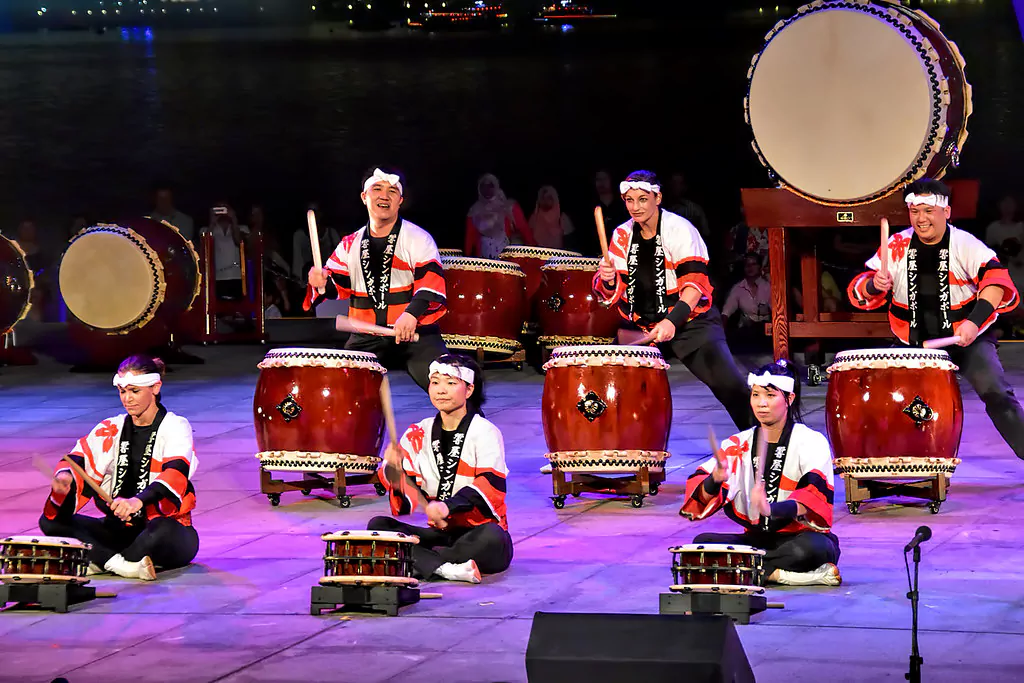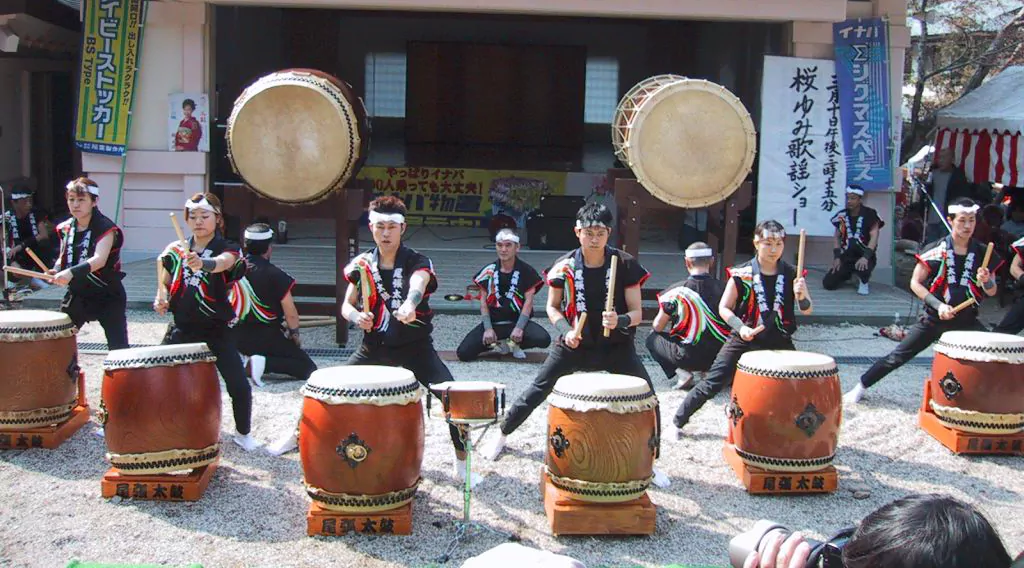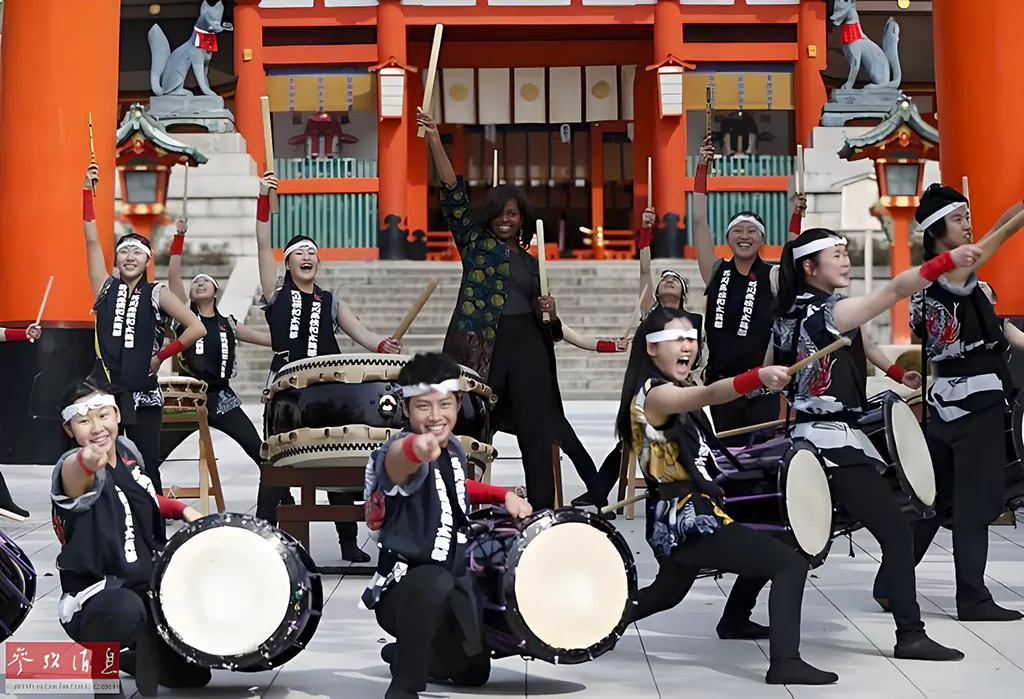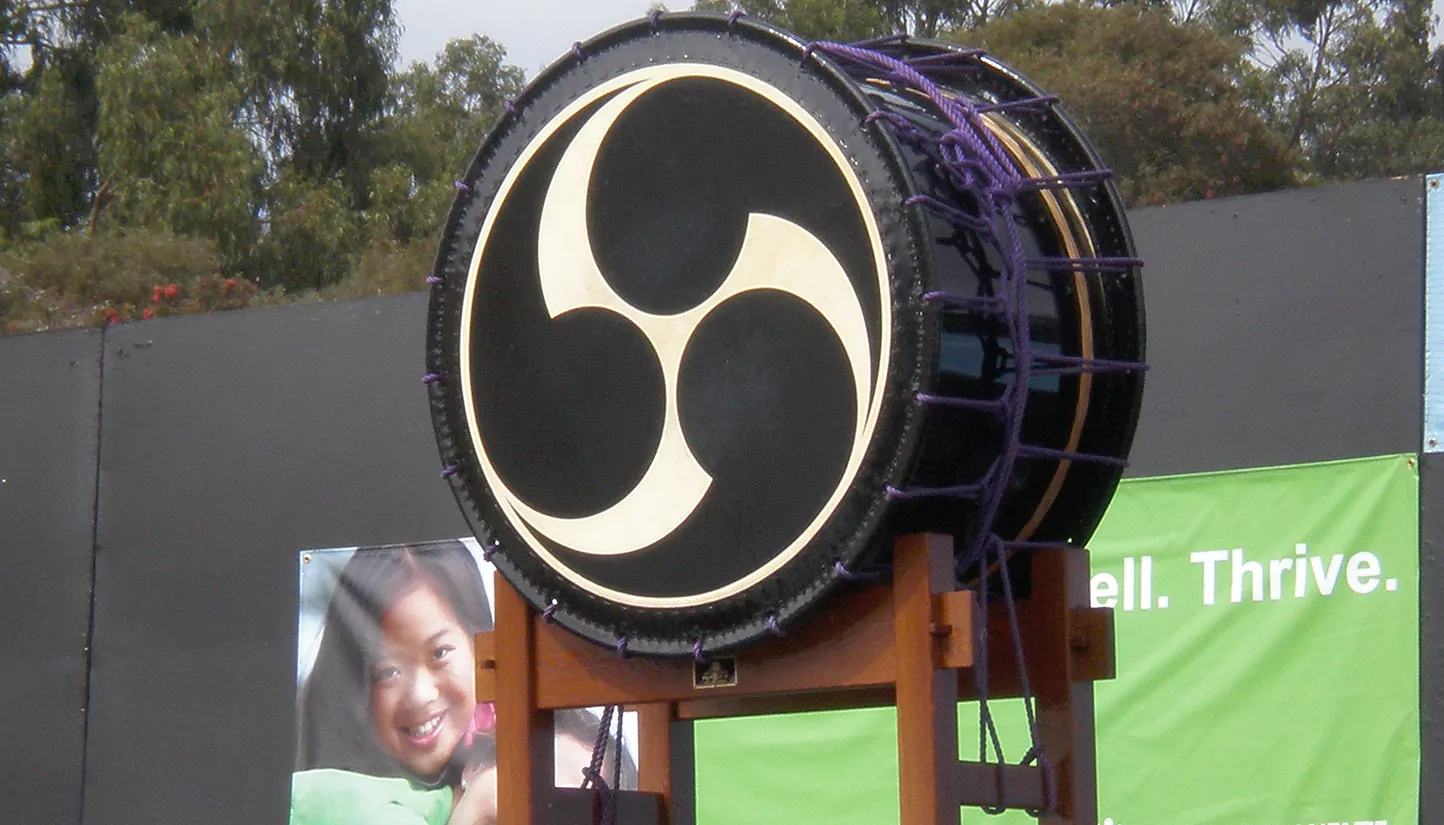CLASS INFORMATION: Taiko is the tradition of ensemble drumming, which holds an ancestral lineage, and a timeless yet timely form of artistic expression where tradition joins new consideration, born of technological times. This fusion results in new, exciting artistic experiences that merge the raw, pulse-pounding power of taiko with fresh, exultant multimedia audio/visuals and cutting-edge applications of digital technology to the performing and visual arts – including digital sampling, digital synthesis, interactive multimedia, projection/video mapping, and virtual reality (VR). In this article we explore some of the multiple dimensions of this creative conjunction, from innovative forms of collaboration, to original processes of artistic creation and audience engagement, and the opportunities for present and future creative explorations in digital realms.

Taiko and Digital Art Fusion Explained
Taiko drumming (from “Taiko,” word for “drum”) has its roots in Asia culture and is a powerful blending of music, dance, martial arts, and theater. Digital arts, digital synthesis, interactive media, virtual environment and augmented reality, provide new means to turn traditional performance into multi-dimensional experiences! Taiko in digital art This is a collaboration that transcends conventions of artistic expression, transcending conventional performance modes to generate immersive environments that stimulate the senses.
Digital Synthesis in Taiko Performances
Digital synthesis is the use of electronic means to manipulate sound and vision to produce new and exciting audio-visual sensations. Paired with taiko, digital synthesis represents a world of opportunities in rhythmic exploration, visual exploration, and audience experience.
Digital Sound Manipulation
Digital synthesis is used more and more by taiko groups to enhance their sound. You also get inserts that use the drum sounds as is, manipulated, or enhanced with synths, echoes, reverbs, and rhythmic layers. Ov Herse manipulates these traditions for the here and now, with contemporary nods that appeal to a wider audience worldwide.
An example of this is the group “Rhythmic Fusion” who use digital synthesizers that combine traditional taiko rhythms with a layer of hip hop beats to create a hybrid soundscape that resonates with the younger, technologically-connected generation. Performer-players improvise with synthesised sonic ambiences, and flexibly time their rhythmic responses to digital triggers, resulting in lively performances.
Visual Digital Enhancements
Visual digital synthesis Visual digital synthesis applies modern computer technologies such as projections, animations and synchronized visualizations to the typical taiko performance. Digital artists work closely with drummers to interpret rhythms, transforming them into visual stories that get projected on screens as well as directly onto the artists and instruments.

One noted collaboration was with multimedia artist Hiroshi Takahashi, whose own visuals would interact with live drumming. Projected designs, forms, and hues developed with musical amplitude, offering the audience visual counterparts to soundscapes.
Applications of Virtual Reality and Augmented Reality
VR and AR expand the possibilities of taiko experiences while bringing audiences and performers together in completely new and engaging ways.
Immersive VR Performances
VR tech makes taiko performances fully immersive, putting the audience right there in virtual worlds that transport them to rhythmic soundscapes of performances. For audiences with virtual reality headgear, performances are experienced in unique ways, with access to digital landscapes choreographed to live drumming.
For one, it can people things they otherwise wouldn’t do — like, for example, try out a taiko drum circle. A new project, Virtual Drum Circle, designed by a group of digital artists and taiko drummers, typifies VR’s potential. Dwellers in VR worlds navigate interactive virtual environments which adapt to live taiko soundscapes both visually and aurally. This degree of involvement results in very rich levels of emotional and sensory involvement.
AR in Interactive Performances
AR superimposes CG visualizations on the actual taiko performances and when users look at these visualizations, they can fully emotionally experience them. The performance is experienced as on AR-enabled devices, the audience sees live performances supplemented with interactive, digital layers which visually interpret rhythm and motion.
In the AR-augmented show “Echoes of Rhythm,” audience members experienced digital animations synchronized to taiko beats through AR glasses or on their smartphone apps. Digital gave further depth and meaning to traditional performances, allowing them to reach the technical generation and maintaining vibrancy for taiko in execution and in cultural reach.
Interactive Multimedia and Audience Engagement
Interactive multimedia installations and performances in which the audience actively contributes and changes the course of the rhythm and visuals in real-time. Many such displays include sensors such as those used for detecting motion, touch or digital controllers and may allow spectators to determine aspects of the contents of a display.
Sensor-based Interaction
Audience member motions are detected and converted into rhythmic stimuli or visual alternations in shows. At the installation “Rhythmic Bodies,” the audience’s movements affected drum sounds and visual projections, leading to in-the-moment collaborative performances that broke down the barrier between audience and performer.

Real-time Collaborative Experiences
By virtual means, players across the globe connect to each other in real-time to play group-based taiko together. By a combination of on-line streaming and interactive multimedia tools, there’s an opportunity for audiences from around the world to remotely participate during a live, making a shift in the rhythmic patterns employed in the show, or in the visuals, through digital contribution.
Among them is “Global Beat,” an online collaboration project where individuals in different countries shared influences on live taiko music using the digital interface, doing geographically mixed, rhythmically innovative things.
Case Studies of Notable Collaborations
Case Study: “Drums of Illusion” by TAIKOPROJECT and Digital Artist Keiko Mori
For “Drums of Illusion,” TAIKOPROJECT joined forces with Keiko Mori, a digital artist who focuses on interactive imagery. Mori’s computer-generated visual landscapes pulsated with the rhythms of the taiko, providing an immersive, multi-sensory environment. Viewers reported greater emotional immersion and connection as a result of aligned rhythm and imagery.
Case Study: Kodo Ensemble and VR Specialists “Virtual Pulse” There is no doubt that immersive content can transform how an audience experiences the music.
Virtual Pulse, a project between Japan’s Kodo Ensemble and VR experts, allowed audiences to experience virtual reality environments inside an artificial world, immersed in taiko drumming. Participants felt more emotionally engaged and a stronger attention to rhythmic accuracy in virtual experiences and their use in traditional taiko contexts is an interesting VR application.
Issues in Integrating Digital and Conventional Psychology

There are several challenges to combining ancient taiko drumming with digital art:
Technical complexity: fine tuning the synchronicity between digitally designed elements and live rhythms the technology is quite technically demanding.
Maintaining Authenticity: Juggling old school flavoring with modern features requires sensitive considerations for upholding cultural authenticity and artistry.
Accessibility and Audience Experience: Making sure our digital elements don’t upstage the physical performance experiences, but is intentional in design and thoughtful in audience engagement tactics.
Future Potential and Innovations
The future for taiko and digital art looks bright:
Advanced Interactive Technologies: Developments in sensor-based technologies (including haptic feedback and real-time interactive behavior interfaces) will lead to more complex forms of interactive performance.
Worldwide Virtual Collaboration: People around the world will have more opportunity to collaborate in this way over distance and use new technologies to inspire and innovate with rhythmic performance through cultural expression!
AI-based digital creations: with AI, we might be able to introduce a new meaning of rhythm and visual creation and provide real time generative art experience.
Conclusion: Expanding Artistic Boundaries
Mar 12, 2021 “WIRED TOKYO 1999“ is a mixed-media art live performance beyond time and space, where Japanese culture and the latest technology converge, defining a new entertainment live experience that is both futuristic and traditional. Bringing together the roots of taiko in a surrounding new media environment and the world of Indigenous traditional music, the multimedia performances and other landscapes are new expressive means against the current trend of cultural under-appreciation and non-arts-based innovation. Further and ongoing discovery and innovation at this intersection will most certainly lift all of this to even greater heights, delivering even more meaningful, compelling experiences to ever more diverse people worldwide.



